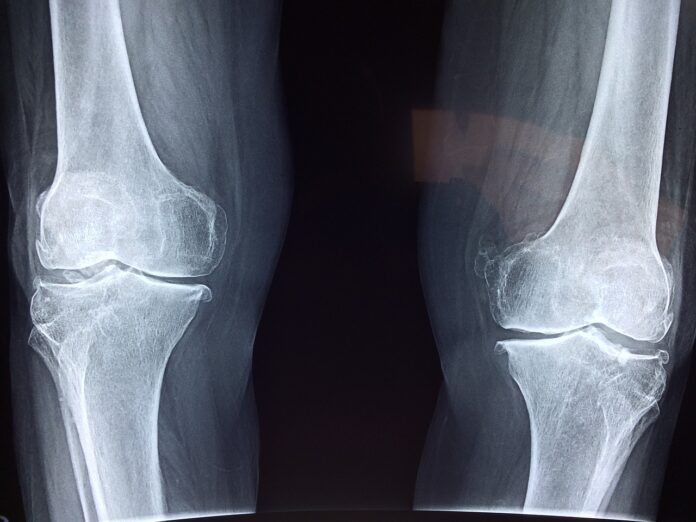By Hari P. Bezwada, MD
When is it time to have my joint replaced?
It’s a common question from patients who experience hip and knee pain on a regular basis.
And while everyone is different, there are certain telltale signs that it’s time to consider a joint replacement.
At the Jim Craigie Center for Joint Replacement at Penn Medicine Princeton Medical Center (PMC), orthopaedic surgeons are performing hip and knee replacements using minimally invasive techniques, helping patients to reclaim their lives with more mobility and less pain.
A Fact of Life
It’s an unfortunate fact of life, but just about everybody develops osteoarthritis at some point as they get older.
Wear and tear on the joints over time can cause the protective cartilage to break down, leading to bone rubbing against bone. This can cause pain, stiffness and swelling, as well as reduced function and disability.
While everyone is at risk for osteoarthritis as they age, certain people may be more likely to develop the condition, including those with prior joint injuries or a family history of the disease. Additionally, people who are overweight or obese are at greater risk for osteoarthritis.
Osteoarthritis can occur in any joint, but it affects the hips and knees as well as the hands most often.
Telltale Signs
Osteoarthritis develops gradually and its symptoms — especially in the early stages — can typically be managed with conservative treatments, such as anti-inflammatory medications, physical therapy and cortisone injections.
However, the following are five telltale signs that a joint replacement may be necessary.
- Persistent or severe pain. Osteoarthritis typically starts out as mild ache or dull pain that gets better with rest. As it advances, the pain can become constant and more severe, occurring morning, noon and night. It can get so bad that you have a hard time getting out of bed in the morning and are wiped out by the end of the day. It may also keep you awake at night.
- Worsening joint function. As joint damage progresses, you may notice a gradual decline in joint function. This can manifest as difficulty bending or straightening the affected joint, instability, or a feeling of grinding or catching within the joint.
- Decreased mobility. Difficulty walking, climbing stairs, getting up from a chair or performing routine tasks due to joint pain and stiffness is a common sign that your hip or knee joint is deteriorating and needs to be replaced.
- Negative impact on quality of life. Maybe you used to be a little sore after a few hours of tennis, but now you can only play 15 minutes before having to stop because of the pain in your knees. Maybe you love to travel but haven’t booked any trips lately because the walk through the airport concourse is just too much on your hip. Or maybe you were always able to take the dog on a two-mile walk every day, but now you’re lucky if you can make it half a mile. When joint pain starts to impact activities you love to do, it is time to talk to an orthopaedic surgeon.
- Conservative treatments no longer work. Joint replacement surgery is typically recommended if conservative treatments such as lifestyle modifications, medications, physical rehabilitation, and injections no longer relieve symptoms.
More Than a Million Surgeries Each Year
According to the American Academy of Orthopaedic Surgeons, hip and knee replacements are among the most successful operations in all of medicine. More than 450,00 total hip replacements and more than 700,000 total knee replacements are performed each year in the United States.
With a total hip replacement, the orthopaedic surgeon replaces the upper part of your femur (the long bone in the thigh of your leg) with an artificial ball that will glide normally in your hip socket, which will be lined with metal and plastic as part of the surgery. Your surgeon may decide to attach your new joint with or without bone cement. If your doctor decides not to use cement, a special implant will be used that allows your bone to grow into it.
There are several ways to approach your hip in completing a total hip replacement: direct anterior, anterolateral, direct lateral or posterior approach. Each of these techniques has advantages and disadvantages. Talk to your doctor about what is best for you.
Knee replacement surgery involves resurfacing the knee joint, and like hip replacement surgery, surgeons use artificial components to replace damaged tissue.
At the Jim Craigie Center for Joint Replacement at PMC, orthopedic surgeons use the latest techniques in minimizing skin incisions and practicing muscle-sparing surgery, which diminishes trauma to your soft tissues and allows for a quicker recovery.
Penn Medicine Princeton Health is the recipient of the Joint Commission’s Gold Seal of Approval for total hip and knee replacements. It is also one of four New Jersey healthcare organizations and 84 nationwide to earn advanced certification in total hip and total knee replacement from the Joint Commission, which is the nation’s oldest healthcare accrediting body.
Talk to Your Doctor
Hip and knee pain can be debilitating, affecting mobility, quality of life, and overall well-being. For many individuals, the prospect of joint replacement surgery may seem daunting, but it can also be life-changing, providing relief from chronic pain and restoring function.
If you have joint pain that is impacting your quality of life, talk with your doctor about whether joint replacement surgery is right for you.
To find a physician affiliated with Penn Medicine Princeton Health, call 1 (888) 742-7496, or visit www.princetonhcs.org.
Hari P. Bezwada, MD, is a board-certified, fellowship-trained orthopedic surgeon on the medical staff of Penn Medicine Princeton Health.

